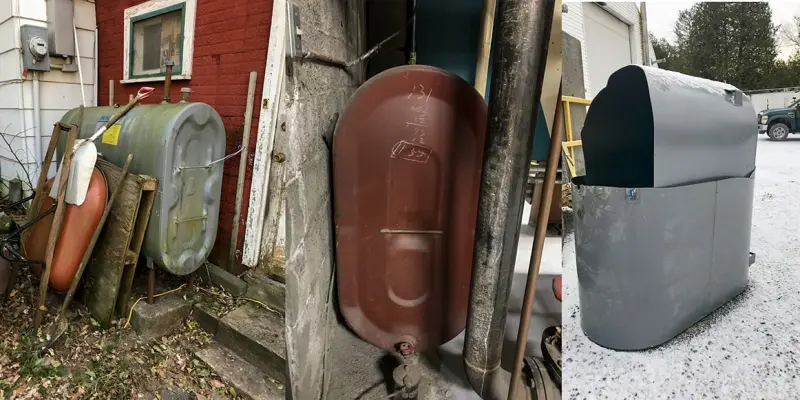Beneath the peaceful facade of many homes lies a potential threat that, if left unattended, can lead to environmental hazards and safety risks: aging oil tanks. Homeowners navigating the complexities of oil tank removal need a comprehensive guide to understand the hidden risks associated with these subterranean structures. This handbook provides essential insights, precautionary measures, and step-by-step considerations to ensure a safe and responsible oil tank removal process.
Recognizing the Risks: Understanding the Impact of Aging Oil Tanks
Before delving into the removal process, homeowners must recognize the inherent risks associated with aging oil tanks. Corrosion, leaks, and structural deterioration pose environmental threats, potentially contaminating soil and groundwater. Understanding these risks is the first step towards proactively addressing the challenges hidden beneath the surface.
Environmental Impact Assessment: Unveiling the Hidden Dangers
An environmental impact assessment is a critical component of oil tank removal. Homeowners should enlist professionals to conduct soil and groundwater testing to unveil any hidden dangers. This assessment helps determine the extent of potential contamination and guides the development of a tailored removal strategy to mitigate environmental risks.
Navigating Regulatory Requirements: Ensuring Compliance and Safety
Oil tank removal is subject to stringent regulatory requirements that vary by location. Navigating these regulations is crucial to ensuring compliance and promoting safety throughout the removal process. Homeowners should familiarize themselves with local laws, secure necessary permits, and engage professionals who understand and adhere to the established regulatory framework.
Safety First: Personal Protective Measures and Precautions
Safety is paramount during oil tank removal. Homeowners and anyone involved in the process should prioritize personal protective measures. This includes wearing appropriate safety gear such as gloves, eye protection, and masks to shield against potential hazards. Adequate ventilation and emergency response equipment, such as fire extinguishers, must be readily available to ensure a secure working environment.
Choosing the Right Removal Method: Tailoring to Individual Situations
No two oil tank removals are the same, and choosing the right removal method is essential. Factors such as tank condition, location, and environmental impact influence the decision between in-place abandonment or complete extraction. Tailoring the removal method to the unique circumstances ensures an efficient and environmentally responsible removal process.
Site Excavation: Precision Digging to Avoid Unforeseen Challenges
Excavating the site requires precision to avoid unforeseen challenges. Careful digging around the tank is essential to prevent damage to the tank or underground utilities. Skilled operators and specialized equipment contribute to successful site excavation, setting the stage for subsequent phases of the removal process.
Pumping and Cleaning: Safely Handling Remaining Oil and Residue
Once the tank is exposed, safely pumping out any remaining oil and thoroughly cleaning the tank’s interior are crucial steps. This minimizes the risk of spills and environmental impact during removal. Proper disposal of the extracted oil is essential to prevent contamination and underscores a commitment to minimizing hidden risks throughout the oil tank removal process.
Lifting and Transport: Ensuring Secure Extraction
The safe lifting and transport of the tank mark a pivotal stage in oil tank removal. Precision and specialized equipment are required to extract the subterranean relic without causing damage. Enlisting skilled operators ensures a secure removal process, mitigating potential risks associated with lifting and transporting the tank.
Contingency Plans: Addressing Unexpected Challenges
Hidden risks may surface unexpectedly during the removal process. Homeowners and removal professionals should have contingency plans in place to address unforeseen challenges promptly. These plans may involve environmental remediation measures, safety protocols, or modifications to the removal strategy to ensure the overall success of the operation.
Post-Removal Assessment: Ensuring a Clean Slate
After the tank has been removed, a post-removal assessment is essential to evaluate the success of the operation and address any remaining environmental concerns. Homeowners should work with professionals to ensure that the removal process has left the property in a safe and environmentally sound condition
Conclusion:
Navigating the hidden risks associated with oil tank removal demands a proactive and informed approach from homeowners. By recognizing the risks, conducting environmental impact assessments, adhering to regulatory requirements, prioritizing safety, and choosing the right removal method, homeowners can ensure a successful, environmentally responsible, and secure oil tank removal process. This handbook serves as a comprehensive guide, empowering homeowners to navigate the complexities of oil tank removal with confidence and diligence.








